Glenn Howells’ English National Ballet named RIBA London Building of the Year 2021
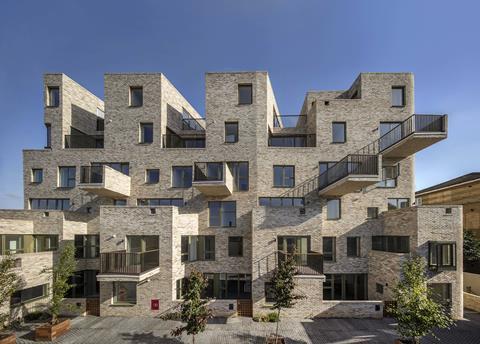
Peter Barber Architects has swept the board at the RIBA London Awards, picking up four trophies for its housing projects.
The practice was closely followed by AHMM which won three of the regional awards.
Glenn Howells Architects took the award for London Building of the Year for its new home for the English National Ballet.
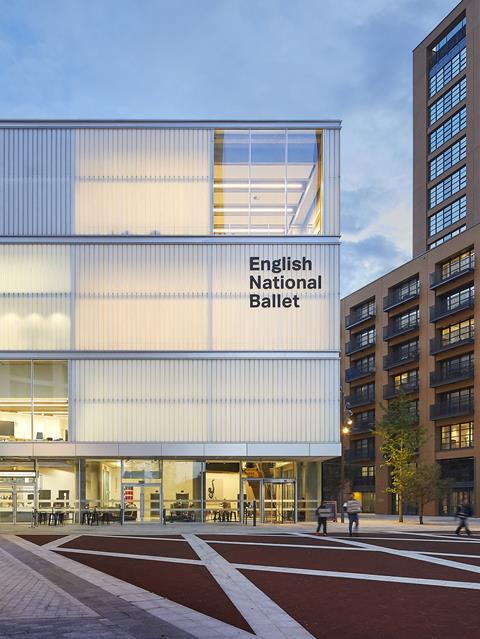
In all, 46 projects were selected by the jury after visiting all 77 shortlisted projects.
They range from Denizen Works’ floating church to Tottenham Hotspur’s new 60,000-seat stadium designed by Populous.
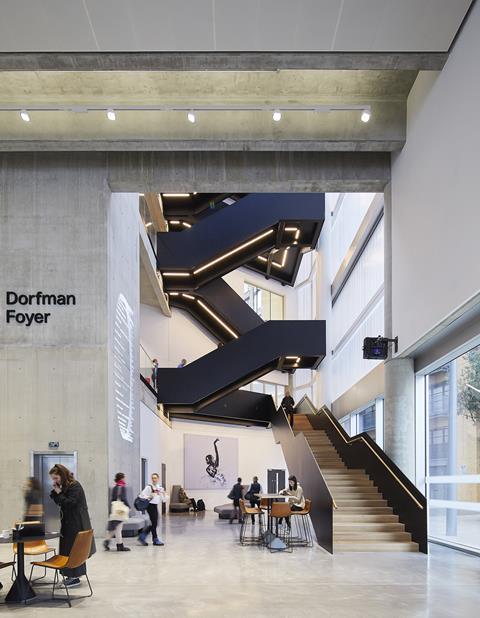
They will now be considered for a RIBA National Award on September 9. The shortlist for the Stirling Prize is drawn from the winners of the national awards.
London jury chair Alfonso Padro, principal and director of education at HKS’s London office, said: “The shortlisted projects were of exceptional quality and generated much debate among the expert panellists which in part focused on sustainability and looking ahead to the creation of local community cohesion.
“The challenges of the past year required the judging panel to be creative with their deliberations and entailed several meetings to ensure projects were debated thoroughly and fairly.”

RIBA London Award winning projects:
• 1 Finsbury Avenue, East London, Allford Hall Monaghan Morris
• 95 Peckham Road, South East London, Peter Barber Architects
• 160 Old Street, East Central London, Orms
• Aikin Terrace, North London, Stephen Taylor Architects
• Apartment Block, London, Coffey Architects
• Blackfriars Circus, South East London, Maccreanor Lavington
• Bobby Moore Academy, East London, Penoyre & Prasad
• Caudale Housing Scheme, North London, Mae Architects
• Centre Building at the LSE, Central London, Rogers Stirk Harbour + Partners
• Centre for Creative Learning – Francis Holland School, London, BDP
• Chapel, London, Craftworks
• Corner House, London, 31/44 Architects
• Eccleston Yards, West London, Buckley Gray Yeoman
• Energy Hub, South East London, Morris+Company
• English National Ballet, East London, Glenn Howells Architects
• Epping Forest House, East London, Studio McLeod
• Fairfield Halls, Croydon, MICA Architects
• Floating Church, London, Denizen Works
• Grain House, London, Hayhurst and Co.
• Holmes Road Studios, North London, Peter Barber Architects
• House-Within-a-House, London, alma-nac
• Kingston School of Art, Kingston upon Thames, Haworth Tompkins
• Kingston University London – Town House, Kingston upon Thames, Grafton Architects
• Lock Keeper’s Cottage, London, Sanchez Benton Architects
• Ludlow Lodge, Sutton, Bell Phillips Architects
• Manhattan Loft Gardens, East London, Skidmore, Owings & Merrill (SOM)
• McGrath Road, East London, Peter Barber Architects
• Moore Park Mews, West London, Stephen Taylor Architects
• Mountview, South East London, Turner Works
• North Street, East London, Peter Barber Architects
• Pennington Street Warehouse, East London, JTP
• Phoenix Garden Community Building, Central London, Office Sian Architecture + Design
• Poplar Works, East London, Adams & Sutherland
• Royal Academy of Arts, West London, David Chipperfield Architects with Julian Harrap Architects
• Royal College of Pathologists, London, Bennetts Associates
• Sports Hall and Swimming Pool Project, South West London, David Morley Architects
• The Officers’ House, South East London, Allford Hall Monaghan Morris
• The Ray, Farringdon, North London, Allford Hall Monaghan Morris
• The Rye Apartments, London, Tikari Works
• The Standard, North London, Orms
• The Student Centre UCL, Central London, Nicholas Hare Architects
• Tiger Way, East London, Hawkins\Brown
• Tottenham Hotspur Stadium, North London, Populous
• Wooden Roof, London, Tsuruta Architects
• York House, North London, deMetz Forbes Knight Architects
• Zayed Centre for Research into Rare Disease in Children, Central London, Stanton Williams
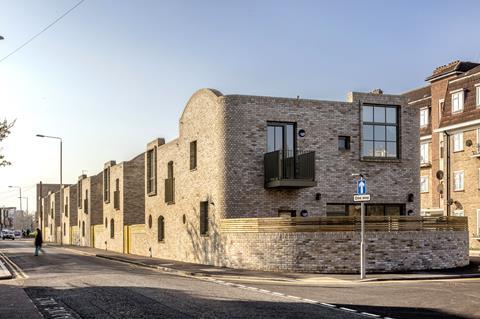
RIBA London Special Awards 2021
• Sustainability Award: Eccleston Yards, Buckley Gray Yeoman
• Building of the Year: English National Ballet, Glenn Howells Architects
• Client of the Year: Kingston University, London – Town House, Grafton Architects and Kingston School of Art, Haworth Tompkins
• Project Architect of the Year: Phoenix Garden Community Building, Office Sian Architecture + Design
• Conservation Award: Royal Academy of Arts: David Chipperfield Architects with Julian Harrap Architects
• Small Project of the Year: Wooden Roof, Tsuruta Architects
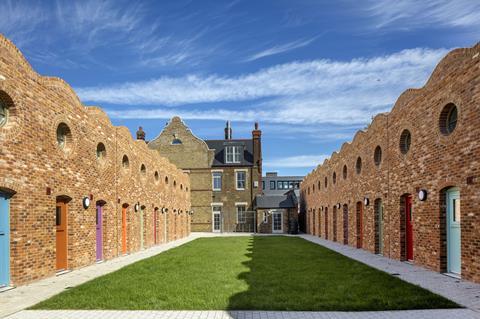
>> Also read: Building Study: The Ray, Farringdon, by AHMM
>> Also read: Building Study: Town House, Kingston University, by Grafton Architects
Judges’ statement
This year’s competition has been extraordinary in many ways largely due to the fundamental consequences of the covid-19 pandemic. Over the same period, the profession has become increasingly focused on its role in addressing the climate crisis and social purpose.
Could this confluence of global threats and trends hold some silver linings? Could the radical reframing of society’s priorities as a result of the pandemic catalyse a more appropriate and urgent response to the climate emergency?
With this year’s judging decisions swayed more than ever before by the entries’ impact on sustainability, the winning projects demonstrate how, even in comparatively modest settings, architects can push solutions in the right direction.
In particular, the results zero in on the creative possibilities of reusing existing buildings, persuasively finding a new kind of beauty in minimising the use of finite resources and elegantly resolved utility. This new sensitivity explores the poetry in the texture and colour of unornamented, self-finished materials finely modulated by humanising daylight strategies, and gives much more weight to occupant contentment in the assessment of success.
Social housing once again features in the mix as the romantic quest for ways to build dignified affordable homes nudges its way towards reality. Prominent tropes in this typology include courtyard arrangements and supplying tenants with their own front doors.
All of this human-centred design points to a strengthening of architects’ compact with society, a trend that we are very happy and proud to celebrate.
















No comments yet